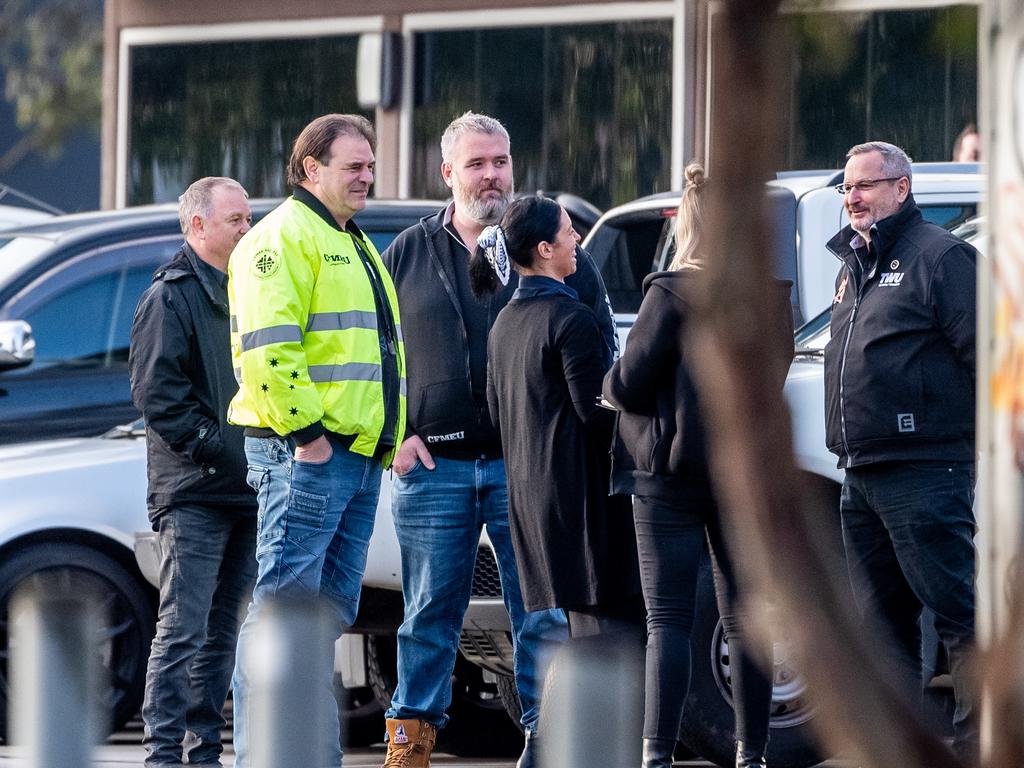Coronavirus: States plan a merry Christmas with border reopenings
Scott Morrison concedes it has felt like the country ‘could break apart’ during the pandemic as border plan divides the nation.

Australia is a divided nation with Western Australia splitting from the rest of the country over a road map to lift state borders by Christmas and Queensland Premier Annastacia Palaszczuk saying she will not be “intimidated” into removing her hard border with NSW.
After the 27th national cabinet meeting on Friday, Scott Morrison conceded the country had at times felt like it “could break apart” during the COVID-19 pandemic as he was forced to scrap the consensus approach that had been used to drive health and economic recovery until this week.
While the Prime Minister said seven of the eight states and territories agreed in principle to work towards reopening Australia by Christmas, including by lifting state borders, WA Premier Mark McGowan declared that, if he opened his state, people would die.
“If we went too soon, it could be deadly and there would be economic devastation,” Mr McGowan said.
Ms Palaszczuk, who will head to the polls on October 31, tweeted late on Friday that she had not agreed to the commonwealth’s COVID-19 hot spot model in its current form and was siding with WA on borders.
Acting Chief Medical Officer Paul Kelly has drafted a national definition of a COVID-19 hot spot to inform states when they should impose restrictions on Australians in particular areas and when they should be lifted. The aim is to remove blanket bans on states, which have caused chaos for Australians trying to access healthcare, education, work and even their family members interstate, and replace them with more localised restrictions.
Mr Morrison, who is pushing for a “sustainable” plan to lift Australia out of the pandemic and the biggest economic shock since World War II, warned premiers that without a vaccine “we may have to live this way for years”.
He said he would not hold the rest of the country back when one or two jurisdictions did not want to join other states on a way forward.
“We’ve decided that this notion of 100 per cent, absolute consensus on any issue is not a way that the national cabinet can indeed work,” Mr Morrison said.
“What we will do is we will set out areas where we can come together, and get as many states and territories as possible to come around that agreement. Not everyone has to get on the bus for the bus to leave the station. But it is important the bus leaves the station, and we all agree on that.”
Australian Industry Group chief executive Innes Willox said national cabinet’s “plan for a plan” on a road map out of the pandemic demonstrated what a long, slow process rebuilding the federation would be. “Business now looks to the states to all get on board and deliver,” he said.
“The cost of restrictions and border closures is immense and the lost opportunities grow every day they are maintained.”
Under Professor Kelly’s model, a coronavirus hotspot would be declared in metropolitan areas if there were 30 or more locally acquired cases over three consecutive days. In regional areas, there would need to be at least nine cases over three days.
Mr Morrison said the definition was a “good starting point” but the final plan would be worked on with the states.
Ms Palaszczuk’s chief health officer Jeannette Young wants 28 days of no community transmission before lifting the hard border with NSW and the ACT. The latter has been free of coronavirus for 56 days.
Pre-empting pressure from her federal and state counterparts, Ms Palaszczuk said before national cabinet on Friday: “I will not be changing that course any time soon, because you’ve seen the great results that have been occurring in Queensland.
“(The criticism) is relentless, it is intimidating, but I will not be intimidated.”
Ms Palaszczuk has been accused of double standards for allowing 400 AFL officials and family members to quarantine at a Gold Coast resort, with access to a pool and bar, while shutting out NSW residents. Queensland expanded its border bubble on Friday to include the northern NSW town of Moree.
Once the commonwealth’s hot spot definition is finalised, New Zealanders who do not live in a hot spot would be allowed into the country without having to quarantine — potentially by Christmas.
“That doesn’t mean Australians can go to New Zealand,” Mr Morrison said. “That’s a matter for Prime Minister (Jacinda) Ardern. But if there’s no COVID in Christchurch, and there’s no COVID in Queensland, then there’s no reason both of them can’t come to Sydney. And that will mean, I think, an important boost for our tourist economy, whether it’s in NSW or anywhere else.”
With close to 4000 Australians returning home from overseas each week and almost 20,000 who want to come back stranded, national cabinet agreed to boost the capacity for international arrivals “where possible” and noted NSW had done much of the heavy lifting for people in hotel quarantine.
As he prepares to announce his own recovery road map on Sunday, Victorian Premier Daniel Andrews defended national cabinet, saying it had served the country well and would prove even more effective once his state’s second wave was under control.
Clive Palmer’s constitutional challenge against Western Australia’s hard border closure is set to be heard before the full bench of the High Court in November.








To join the conversation, please log in. Don't have an account? Register
Join the conversation, you are commenting as Logout